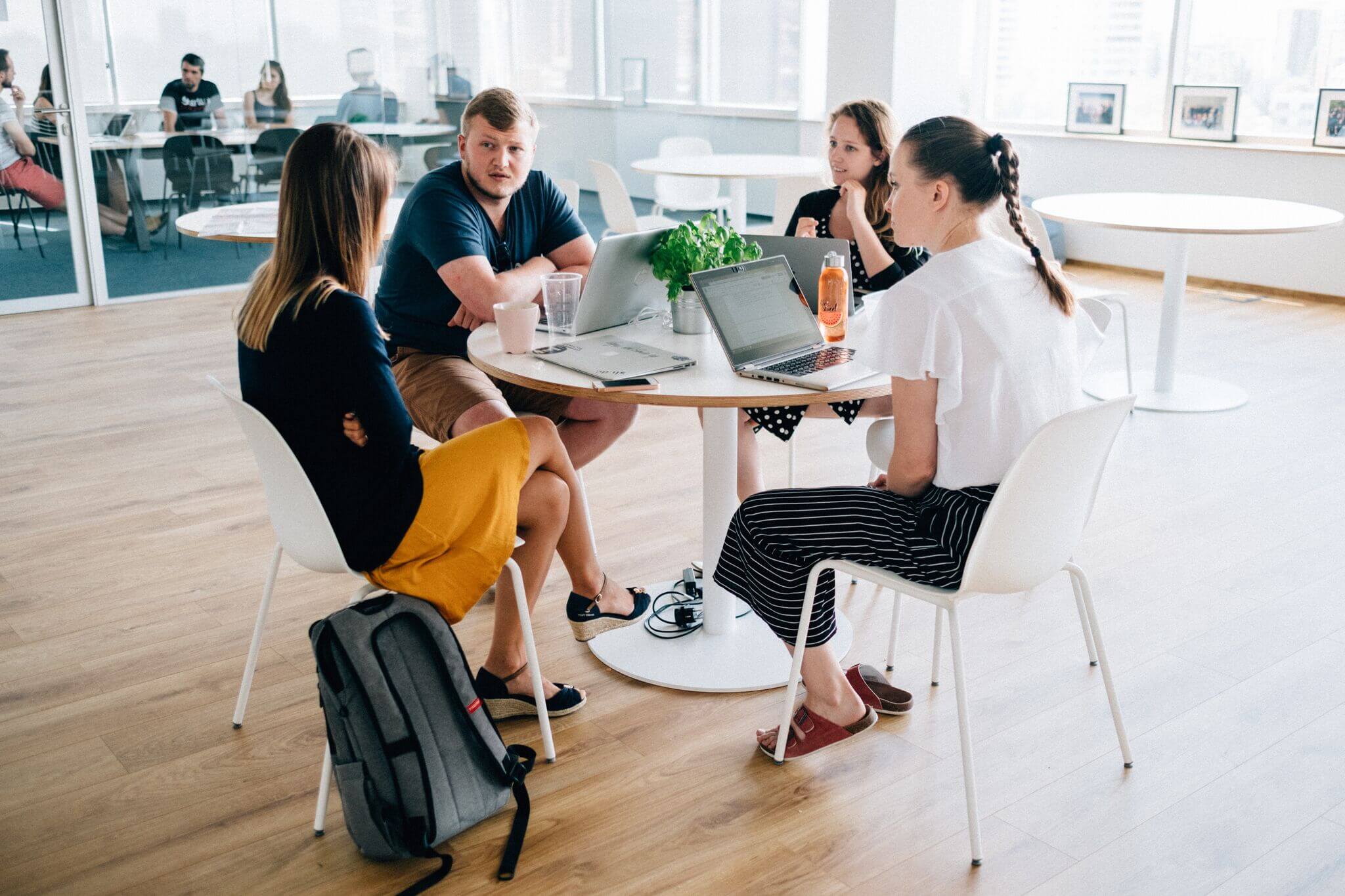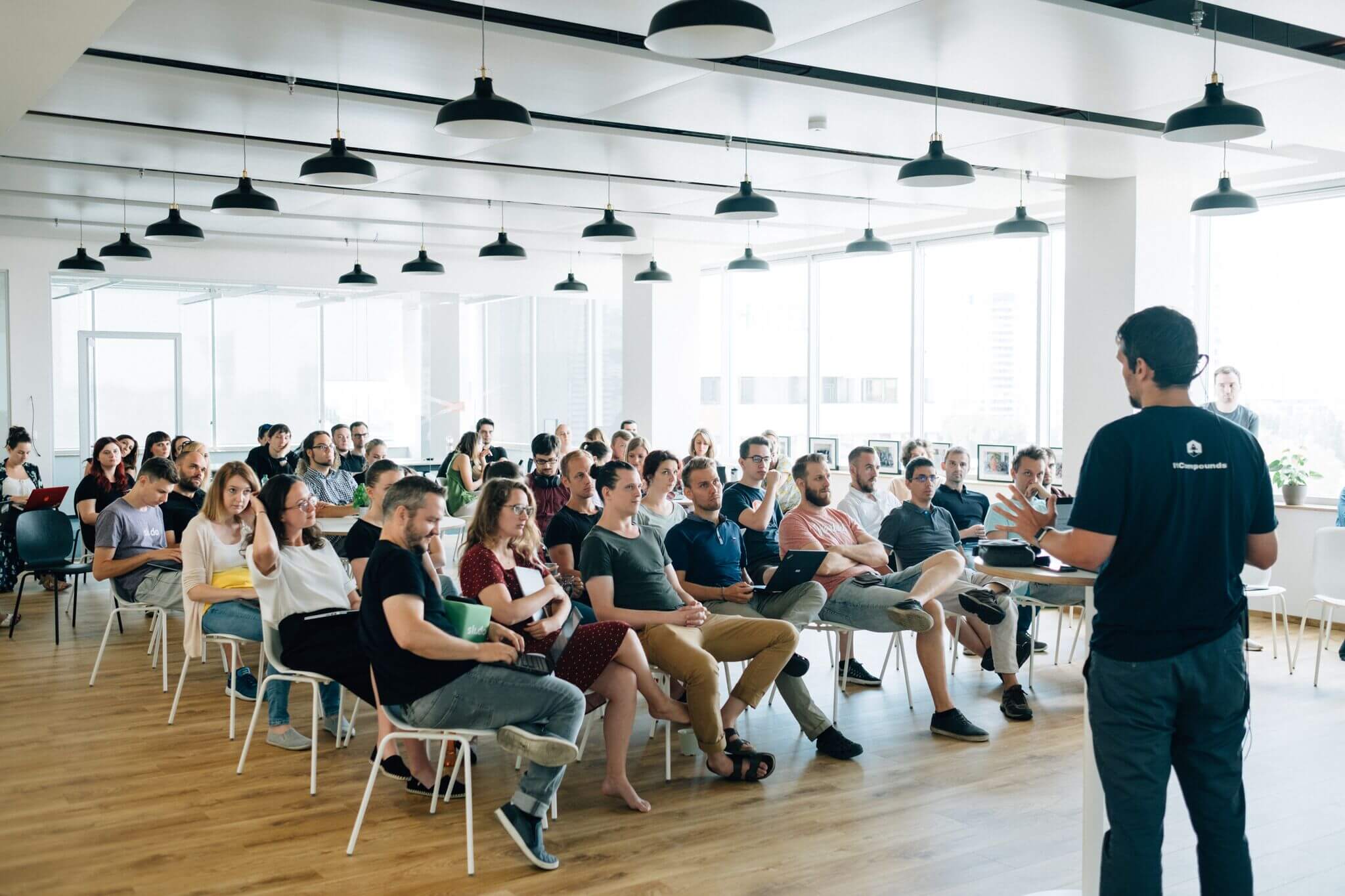As we entered the room, the shiny newness and airy rooms overwhelmed our senses. After six months spent in a transitional space, we finally moved into our new office last week.
Our team is growing fast, which naturally requires more space. But the move was also an important step in fostering our culture. Research by the office furniture giant, Haworth, finds office architecture and design “can support or even change company culture” and that the right office design can help workers feel happier.
In other words, to build a certain culture, you need an office space that reflects it.
To find out whether and how the new environment impacted people’s work, we asked our fellow colleagues about their first impressions. But before we dive in, here’s what our colleagues responsible for the move told us about the why behind designing the new workspace.

How we designed our new office, and why
Discussions about what an ideal office looks like all came down to one thing: it’s one that helps you work easier. To make everyone feel productive and inspired, we wanted an office that was spacious, simple, orderly, and at the same time welcoming and greener.
As our Happiness Manager, Martin Sramko says: “Our goal was to create a friendly and productive environment that represents our culture and suits our team of 120 people. One that empowers people at work but doesn’t distract them at the same time.”
“The new office is humble but looks nice, feels cozy but stimulates people to work, and the detail is well thought-through with the possibility for improvement,” Martin adds.

After having changed offices quite often over the last six years, this was the first time we had the chance to build our own space from scratch and modify it according to our team’s needs. Our Happiness Team shared what the main objectives and priorities were when designing the new office to “live” our culture and values:
“We aimed to provide great working conditions to the people in the HQ as well as welcoming and non-distracting conditions for the team members based in the regions when they come to Bratislava,” says Igor Fratric, CFO.
When thinking about the layout of the new workspace, our main consideration was to create a space that would not only stimulate people to collaborate but also allow them to focus.
As Igor tells us, “We tried to split the space into offices small enough in size to allow people to concentrate, but large enough for people to exchange information and enable easy collaboration on cross-team projects.”

People had the chance to contribute
It is the job of all of us to create a good workspace. And while many people offered their helping hand during the process, there was a smaller group responsible for designing the new offices and sharing their ideas with the rest of the team. A special kudos and a big thank you to them:

The team made sure everything was conveyed well to everyone during all-hands meetings and via internal Slack channels.
But we didn’t want this to be a one-way street. We wanted to give everyone the chance to be part of the conversation and hear what they had to say.
We held a dedicated meeting where we presented updates on the status and plans for the new office. In the meeting, we collected questions through Slido. We also created a separate Slack channel to give people space to share their ideas and inspiration.
First impressions in the new workspace
To see whether and how the workspace impacted our colleagues, we asked them how they felt when they first entered the new place. Here’s what they told us:
“It’s amazing: fresh, clean, light.”
“I was overwhelmed by how spacious it feels.”
“It was a very special feeling. Six years, team of 100+ and now our very own home.”

We asked people to compare their new work environment to our previous workspace and tell us what they liked the most about the new place. People emphasized how much they enjoyed the variety of places to work in the new office.
“I love the open collaboration space and various options for working on sofas, bean bags, standing desks. It makes the interaction with others and the teamwork easier, more informal and natural.”
“We do have more meeting rooms and calling rooms, which is great…I also love that I don’t have to open a door to see if a person that I’m looking for is in there.”

Forbes lists numerous studies that explore the relationship between physical space and productivity. To find out if the new office space impacts the way our colleagues work after the first few days, we asked whether anything has changed in how they carry out their daily tasks. This is what they said:
“I feel like I am able to concentrate much more.”
“Yes, better environment = more motivation.”
“I enjoy the fact that I can change the spots based on how I feel and what I need to work on without compromising on being comfortable.”

As much of our team is based remotely, we wanted to make sure there is enough place for them in the new office when they visit the HQ to create a stimulating and welcoming work environment. A colleague based in the U.S. shares his thoughts on the new office:
“Space itself is so important when it comes to your productivity at work. Even though I’m not based at the HQ, during my visit I had a great time collaborating with my colleagues from other teams in the open space. I also managed to get some quiet focus time in the areas for calls and 1-on-1s.”
Our final 5 tips
If you want your team to thrive, create a workplace that truly encourages and supports the culture you need. Here are our five tips to consider when designing a new office:
- Make sure the workplace reflects your company culture and values
- Dedicate enough space for collaboration but also smaller rooms for calls and 1:1s
- Plan for enough space to accommodate non-HQ colleagues if your team is spread across regions
- Communicate the changes and the “why” to everyone early and often
- Give people the chance to ask questions and contribute ideas
Crowdsource questions and ideas from your team




